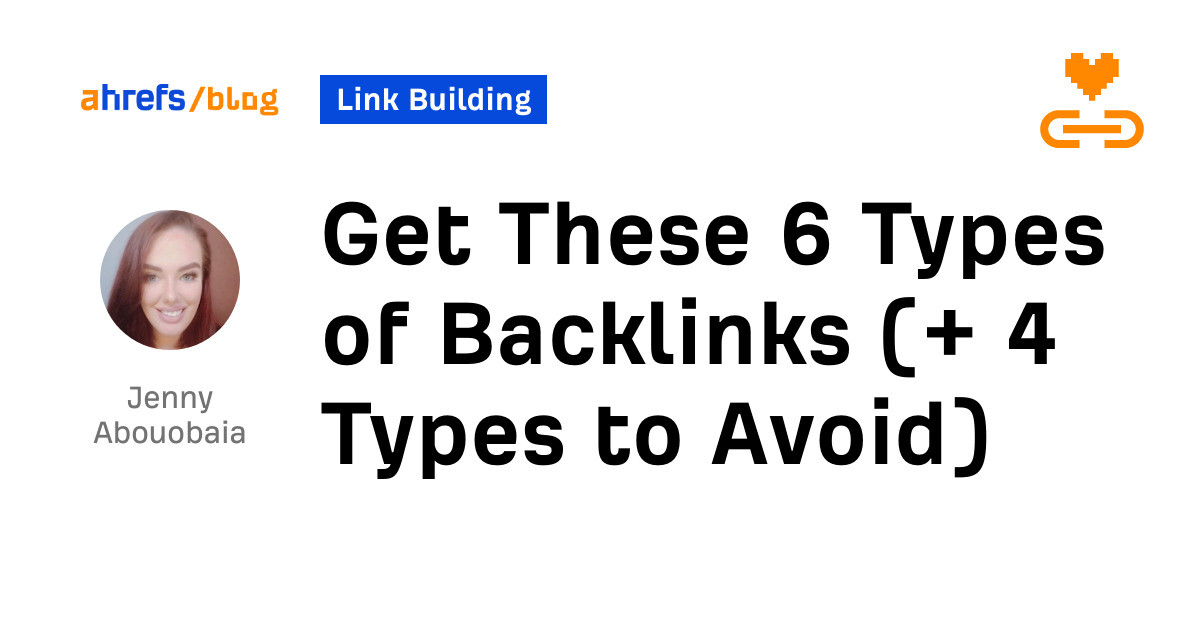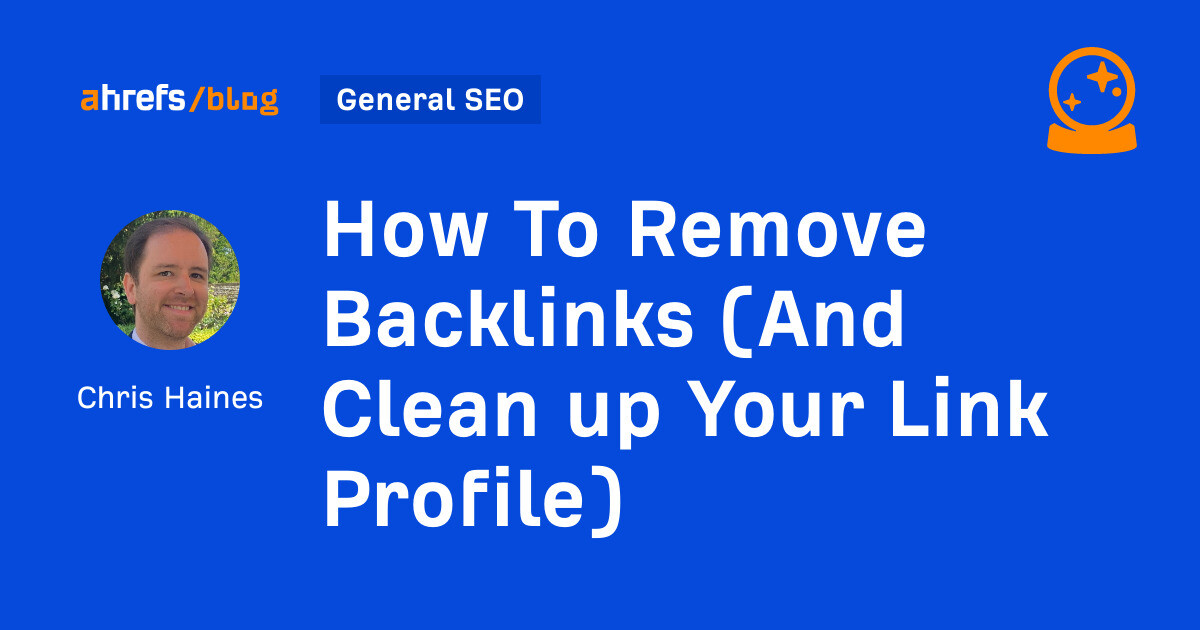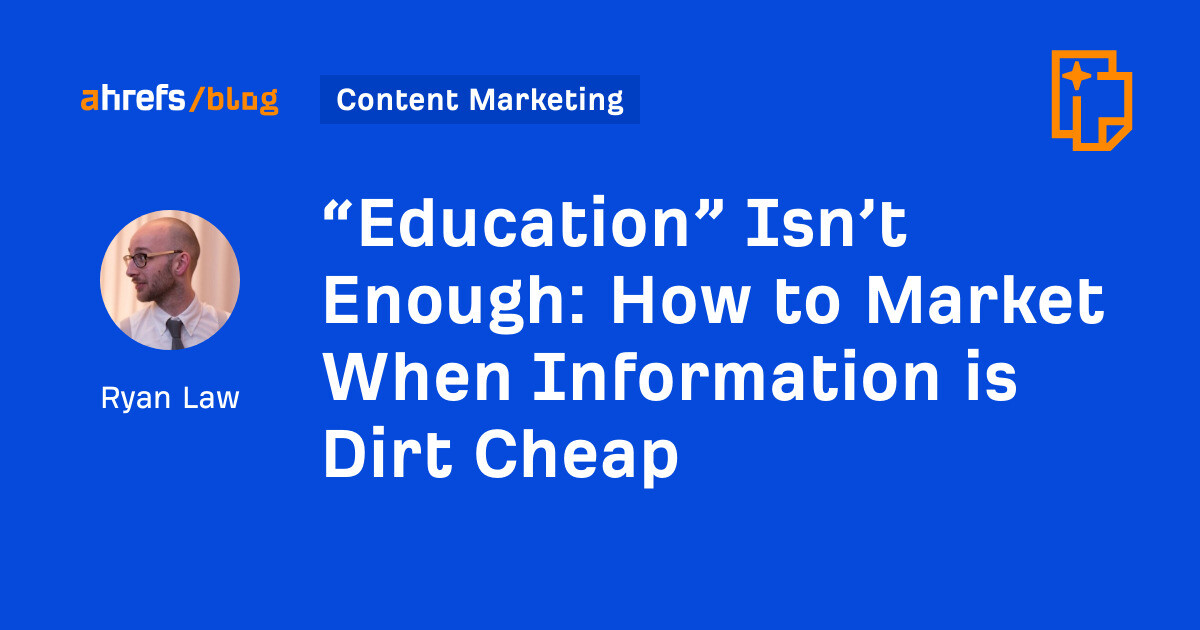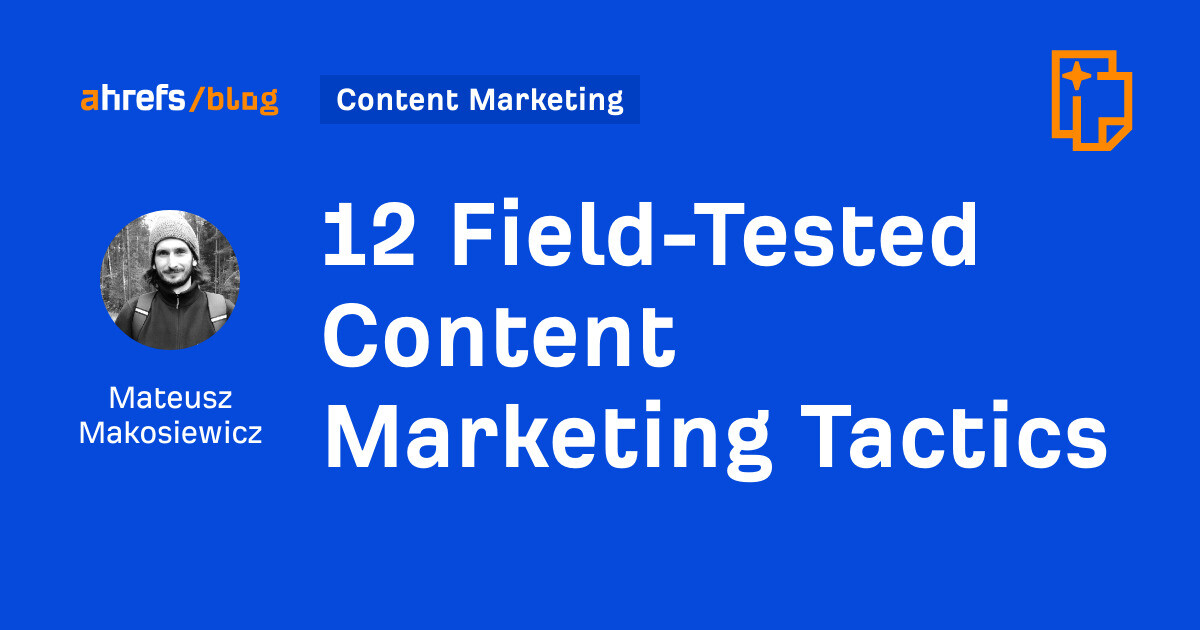We all know that building links is crucial to any SEO strategy. The problem is that with so many link vendors and outreach specialists offering different types of backlinks, it can be challenging to know which links provide value and which you should avoid at all costs.
Because when it comes to building the wrong links, this can be a costly error that can seriously damage your site or, worse, a client’s.
This article will help you start your link building journey the right way. I will walk you through the six types of backlinks that will boost your SEO efforts and, more importantly, four types to avoid.
Although there are many types of backlinks in SEO, only some of those are worth taking the time and effort to acquire. Let’s take a look at some of the most popular types of backlinks and how you can land them.
1. Editorial backlinks
As someone who loves using digital PR for SEO, I guess it’s probably no surprise that editorial backlinks are at the top of the list.
Being cited within content as an authoritative source is one of the best links you can acquire. These can often come from high-authority sites and also drive tons of referral traffic.

How it works
Create high-quality content that other sites will want to cite as a source and include linkable assets like infographics within your content that other sites will be keen to share.
Also, use PR techniques (e.g., newsjacking) or reactive PR with platforms (e.g., Help a Reporter Out, aka HARO), which allows you to be quoted as an expert source on a topic and achieve editorial links to your website.
2. Guest blogging backlinks
Most SEOs will build guest blogging links for every site they work on; in fact, it’s the most used tactic, according to Authority Hacker’s link building survey.
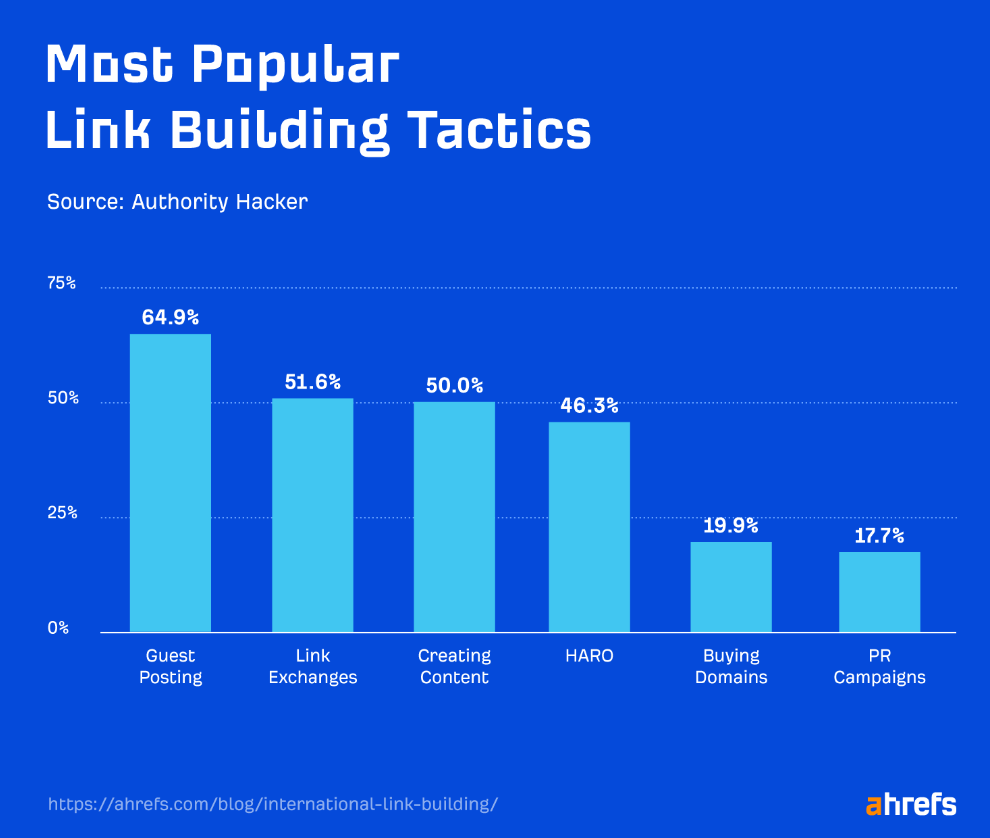
The only problem with these types of links is that most people don’t take the time to build them themselves. Most SEOs (unless working for an agency with an in-house link building team) outsource to others and, as a result, the links are often on low-quality sites.
These links are relatively easy to acquire, as it’s a win-win for both sites. Not only do you get an excellent backlink from an authority site, but they also get a quality piece of content that will drive traffic to their blog.
With these links, you must do your due diligence before reaching out to sites. Doing your own outreach also means building lasting relationships with web administrators and site owners that you can utilize repeatedly.
How it works
Find the perfect authority site to reach out to. You can easily do this by using Ahrefs’ Content Explorer, entering a keyword or phrase in the title, and filtering the results by Domain Rating (DR). This will help you find appropriate blogs already publishing related content.
In the example below, I have searched for the keyword “link building,” filtering results by DR 30–65. For new sites looking to build links, this DR range works well because it is high enough to move the needle, but not too high that getting a link from the site will be unrealistic.

Once you’ve found relevant sites to reach out to, spend a little time doing some digging. Check a site to see what topics it has covered most recently. Also, be sure to check the quality of links in its backlink profile. I’ll expand on what to look for in a great backlink later on.
Use a tool like Hunter.io to find appropriate contacts for your chosen sites to start putting your outreach emails together.

Now you can reach out and pitch them your topic ideas. Either pitch new topics relevant to their existing content and audience or check their sites for underperforming content and offer to produce an updated version.
In my experience, what works best is to put together a detailed content brief on two to three topics and send that over. This allows a site’s content team to get an idea of the article you are looking to provide and how much value it can add.
A detailed content brief should include the following:
- Title ideas
- Similar posts on the SERP
- The goal of the post
- Post format based on SERP intent (commercial, informational, listicle, etc)
- Target audience
- Three to five keywords, their search volume, and keyword difficulty
- “People also asked” questions
- Optimal word count
- Suggested outline and key points (including suggested headings for H2s, H3s, and H4s)
If you have an existing portfolio and following, include links in your email and inform them that you will be happy to share the content with your audience once it is published.
3. Relationship-based backlinks
Relationship-based backlinks could technically fall under editorial links. However, editorial links, as mentioned in the context above, are more organic and take less work to achieve.
Relationship-based links take time and effort to nurture, but they are worth it in the long run.
How it works
Reach out to journalists or web administrators who have already linked to you. Take time to thank them and state you are willing for them to contact you if they need any further input. This can be the first step in building ongoing relationships.
This works exceptionally well in digital PR. Once a journalist knows you are a trusted source of information open to being contacted directly, they are likely to reach out whenever they are working on something they feel you have insights on.
Here’s an example of a nice email I got from the team at ScaleMath after reaching out to them in regards to some expert commentary I provided for the blog:

Another way to build relationships is by using three-way link exchanges. These types of links are working successfully across the globe, as shown in our recent article on international link building.
However, if these are done excessively and without proper due diligence on the sites you’re exchanging links with, they can be labeled as a link scheme. So take extra care when using this tactic.
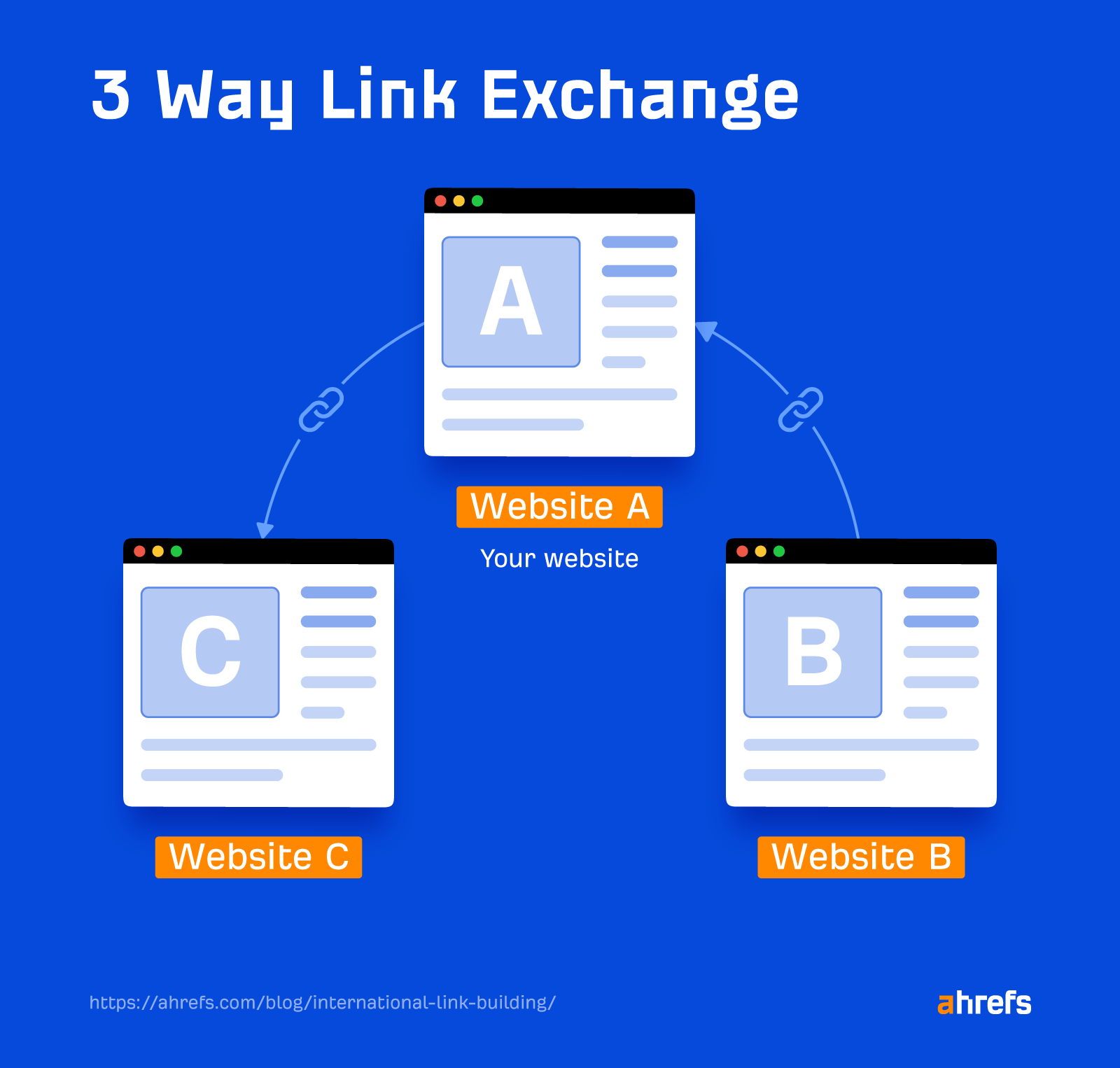
4. Backlinks in business profiles
Building a digital footprint for your business will help search engines consider your website to be well established within your industry. A popular way of doing this is by creating business profiles.
How it works
You can create profiles on business listing websites like Crunchbase or InsiderPages that will include a link to your site. Most of these sites have a landing page that will allow you to go ahead and create a profile, each only taking a few minutes.
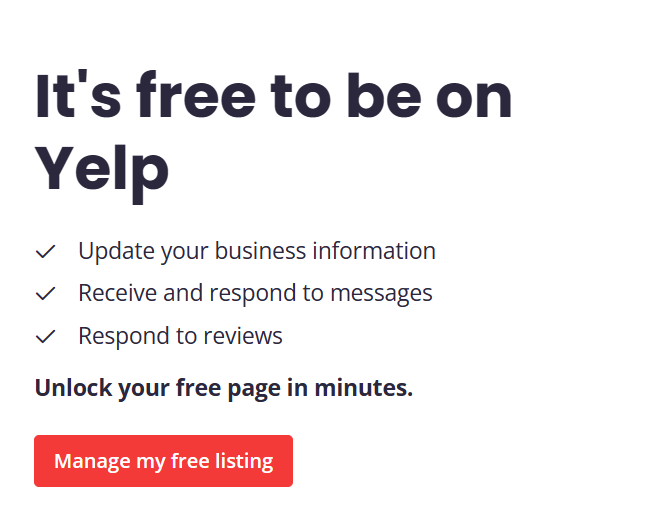
A word of warning, though: Be careful—too much of this is considered spammy and may not work for you. Using the biggest established listings as benchmarks, along with common sense, should be enough to separate the wheat from the chaff.
5. Backlinks from public speaking
Granted, these types of backlinks are not for everyone. But if you’re confident in front of an audience or even behind a microphone, participating in public speaking opportunities can be a fantastic way to earn quality backlinks.
These types of links are also a fantastic way to demonstrate the double “E” in experience, expertise, authoritativeness, and trustworthiness, or E-E-A-T.
How?
Because you’re building a digital footprint showing you’re experienced in speaking as a subject matter expert, which promotes you as a trusted authority in your industry.
How it works
You can earn these links through multiple events, including:
- Live seminars
- Webinars
- Podcasts
- Conferences
- Online courses
Being a guest speaker or instructor means your bit is often posted on the official website with a link so interested users can find out more about you and your experience.

6. Embedded asset links
This is one of my favorite lesser-known types of backlinks that not only works a treat when it comes to landing tons of placements but also serves as excellent brand exposure.
Embedded asset links can be broken into two categories:
- Tools and widgets
- Awards and badges
Tools and widgets
It’s important to note that the first of these will only work in specific niches. However, if you work in a niche where this is possible, it’s a great way to score ongoing links with minimal effort.
How it works
You create a tool or widget on your site and make the code accessible for other website owners in your niche to embed the widget on their sites.
This works well with calculators, but do make sure your brand (and that all-important link to your site) shows as part of the tool. This numerology calculator from Affinity Numerology is a great example:

Awards and badges
The second embedded asset link is far more universal if you are creative. I’ve worked with everything from SEO agencies to niche affiliate websites where this technique was used successfully.
The fact is that most people love accolades. Being named the best at something, especially if it is by a reputable company within your industry, is something worth displaying to potential customers. This helps build trust, which is why this type of backlink is so easy to acquire.
How it works
You create a “best of” style roundup post on your site. You can do this yourself based on your own opinions. Alternatively, if you want to be authentic, you can run a poll on social media or via a tool like Pollfish to get public opinion on your chosen topic.
Then you reach out to the sites you have highlighted in your post and inform them they have been voted the best (at whatever the topic may be). You give them a badge (with your brand and a link to your site) that they can proudly display.
For example, here is a roundup of the “Best Business Blogs” from a U.K.-based SEO agency, Session Media:

The agency lists its top choices, including “The Dad Blog UK,” which then proudly creates its own post to show off the shiny winner’s badge.

And here, you can see the link in the Backlinks report in Ahrefs’ Site Explorer:

Now that we’ve covered some of the best kinds of backlinks you can build for your site, we need to look at the types of backlinks you should avoid.
Granted, some of these types of links may give some sites short-term gains. But more often than not, these links can do significantly more harm than good. Plus, the truth of the matter is most do nothing for your site and are simply a waste of time and money.
7. Link schemes
The use of unnatural links to affect rankings in Google Search results is known as “link spam” or “link schemes.” Link schemes include both inbound links to and outbound links from your website.
Some examples of link schemes include:
- Buying and selling links.
- Excessive link exchanges.
- Requiring links as part of a Terms of Service or other agreement.
- Footers or templates with links that are distributed in mass. For example, hard-coding a link to your website into the WP Theme that you sell or give away for free.
- “Followed” links on ads.
- Over-optimized, keyword-rich links in guest posts and comments.
Private blog network (PBN)
The most popular type of link scheme is the use of private blog networks (PBNs). They’re a collection of websites made purely to link to one another and raise the website’s organic search exposure.
PBNs give the impression that a website has “earned” backlinks from other sites. You create trust signals artificially by linking to your “money” site from all the other sites in your PBN in the hopes that Google will see them as real sites and rank you better in response.
Link building with PBNs (or any link scheme) is risky and can even trigger a Google penalty.
Automated links
Using automated link building software to send links at scale to one site is not new, especially within the black hat SEO community.
However, there is an increasing trend of people packaging these links as link building services, like “foundation links,” at incredibly low prices for those with less experience looking to outsource their link building efforts.

This can be dangerous, especially if you are not in control of the automation process and don’t understand what you are getting.
These tools build a massive network of links from blogs, social bookmarks, wiki pages, etc., all pointing back to one central site. They often include layers of complex, tiered links designed to increase the amount of link equity going back to the main site.
Similar to PBNs, these links are designed to manipulate your rankings on the SERPs and are, needless to say, against Google’s webmaster guidelines.
8. Low-quality or irrelevant directory links
As mentioned above, creating business profiles on high-quality listing sites can be a great way to secure quality exposure.
However, making these at scale on any directory, regardless of the quality, is considered yet another spammy practice.
9. Low-quality forum backlinks
Spamming forums with links to your site is a pretty old-school link building technique that, in honesty, doesn’t do anything for your site.
If links are ever placed in forums, they should appear naturally as part of a genuine discussion.
This example from Hacker News shows someone advising different flight simulators as part of a discussion. This is the only way any links should be placed in forums—when used to give genuine advice or offer resources to other forum users.

10. Non-newsworthy press release links
An official statement issued to the media is known as a press release. It’s frequently used to announce anything noteworthy a business has done to get media attention. Press releases are often used to cover the following:
- Launch of a product, service, or business
- Major updates to a company, such as its rebranding, restructuring, or acquisitions
- Information about a significant crisis
Although press releases serve a great purpose when done correctly, they don’t work so well when the story you are pushing out to the press is not newsworthy. Creating press releases solely to build links is considered a spammy practice.
Of course, if your company has achieved something of merit, experienced a significant change like an acquisition, or released a new product, that’s worth sharing with the press. However, don’t send out a press release about “bring your dog to work Tuesdays” in hopes of building lots of links.
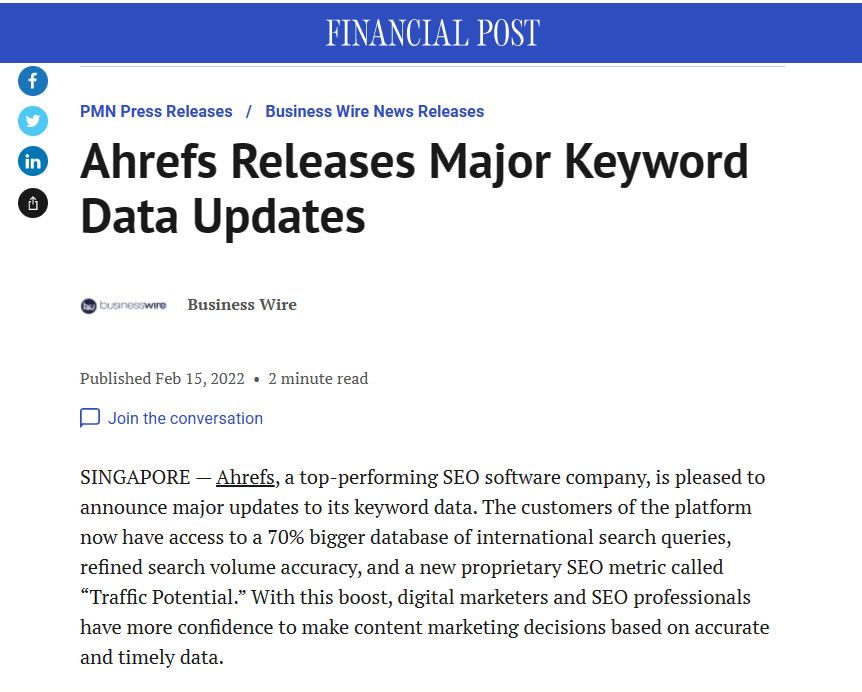
So now that we have looked at the different types of backlinks you should build and avoid, let’s look at what kinds of backlinks are valuable for your overall SEO strategy.
Backlinks coming from trusted, authoritative websites
If a website has a strong backlink profile, it is also likely perceived as an authority in its industry.
Links from high-authority sites also promote trust with search engines, sending a signal that basically says, “Hey, Forbes thinks this site is worth mentioning; check it out.”
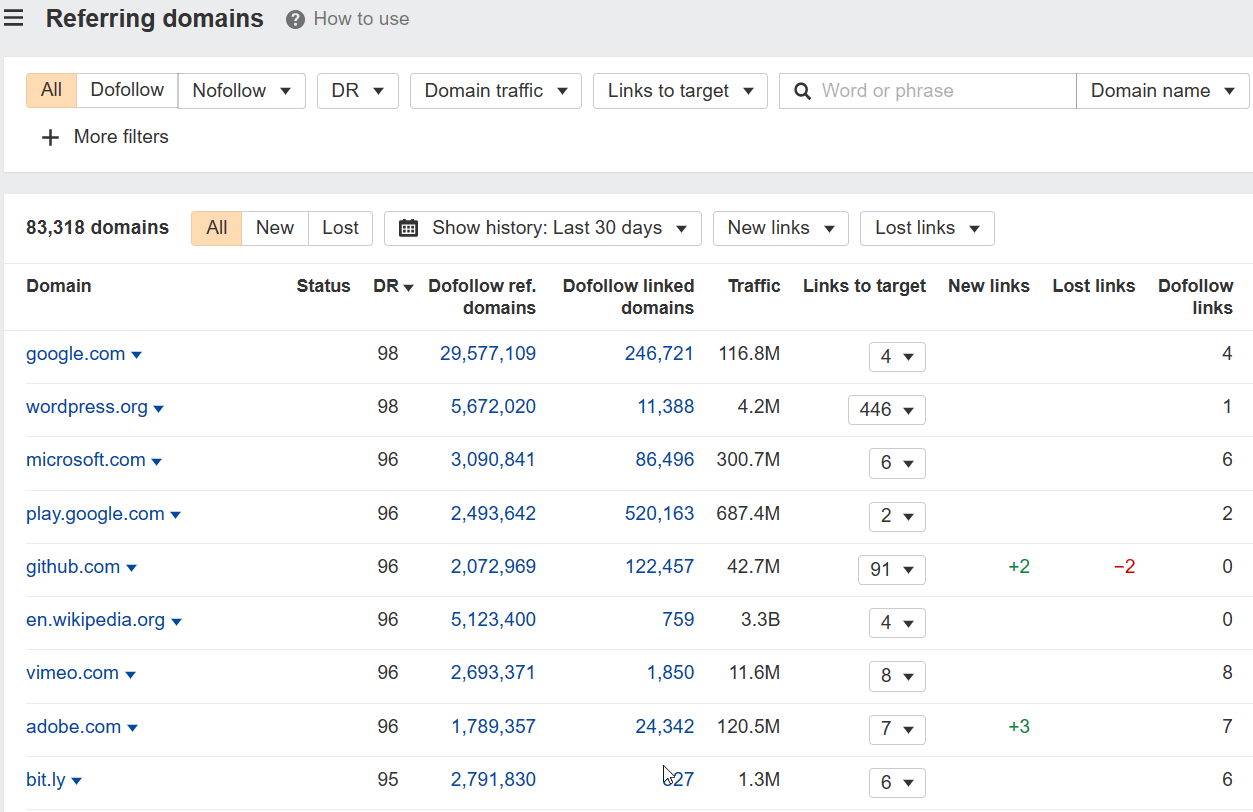
Links with anchor text including your target keywords
We wrote about the correlation between the importance of anchor texts with appropriate keywords for better rankings. To comprehend your page’s content and the keywords it should rank for, Google uses anchor text.
Here are three examples of different anchor texts pointing to the same page sourced from the Backlinks report in Ahrefs’ Site Explorer. The first two mention the target keyword “anchor text” within their anchor texts, while the third one mentions “anchor text” in the surrounding text:

However, it is essential to remember that overuse of keywords within anchor text can be seen as manipulative by Google.
A niche-relevant page that links to yours
Links that are topically relevant to your site are essential and help Google understand your site. However, this is even more true when the page is niche-relevant.
For example, if I have a site about hiking, getting a link from a general news site’s article on hiking is good. But getting a link from another hiking site pointing to mine as an authority on hiking is better.
The more focused the website is on your niche, the better. But what ultimately matters here is the context of the link within the page and its topic.

Followed links
Followed links are the gold standard of backlinks. Everyone wants one because they can distribute link equity to your site and promote trust signals with search engines.
Any link can be considered “followed” if it doesn’t have link attributes like nofollow, sponsored, or ugc.
Each link attribute has a set purpose and provides context to search engines about the link and the page you are linking to. Unfortunately, many people misuse link attributes, sometimes purposefully.

Followed links are often used to cite sources with editorial links. For example, writing an article and quoting the results of a relevant study will link to the website where that information was found.
A current trend is for sites to use the incorrect link attribute only to reach out to you and inform you they will be happy to change the link to “followed” for a fee. This should be avoided, as it can be considered a paid link.
Backlinks from pages with strong backlink profiles
When acquiring links, we want to ensure they pass as much link equity as possible to our page. A page with a strong backlink profile of its own is generally going to provide more link equity.

Link equity is significant because it is linked to PageRank, which is what Google has been using since forever. In other words, the more link equity a page has, the better the probability of it ranking highly.
Final thoughts
Building high-quality backlinks will always be a crucial part of SEO, and the important thing is to build the right links that will positively impact your website. Ideally, backlinks that not only move the needle but also increase brand awareness and drive referral traffic.
Have you got questions? Ping me on Twitter.
